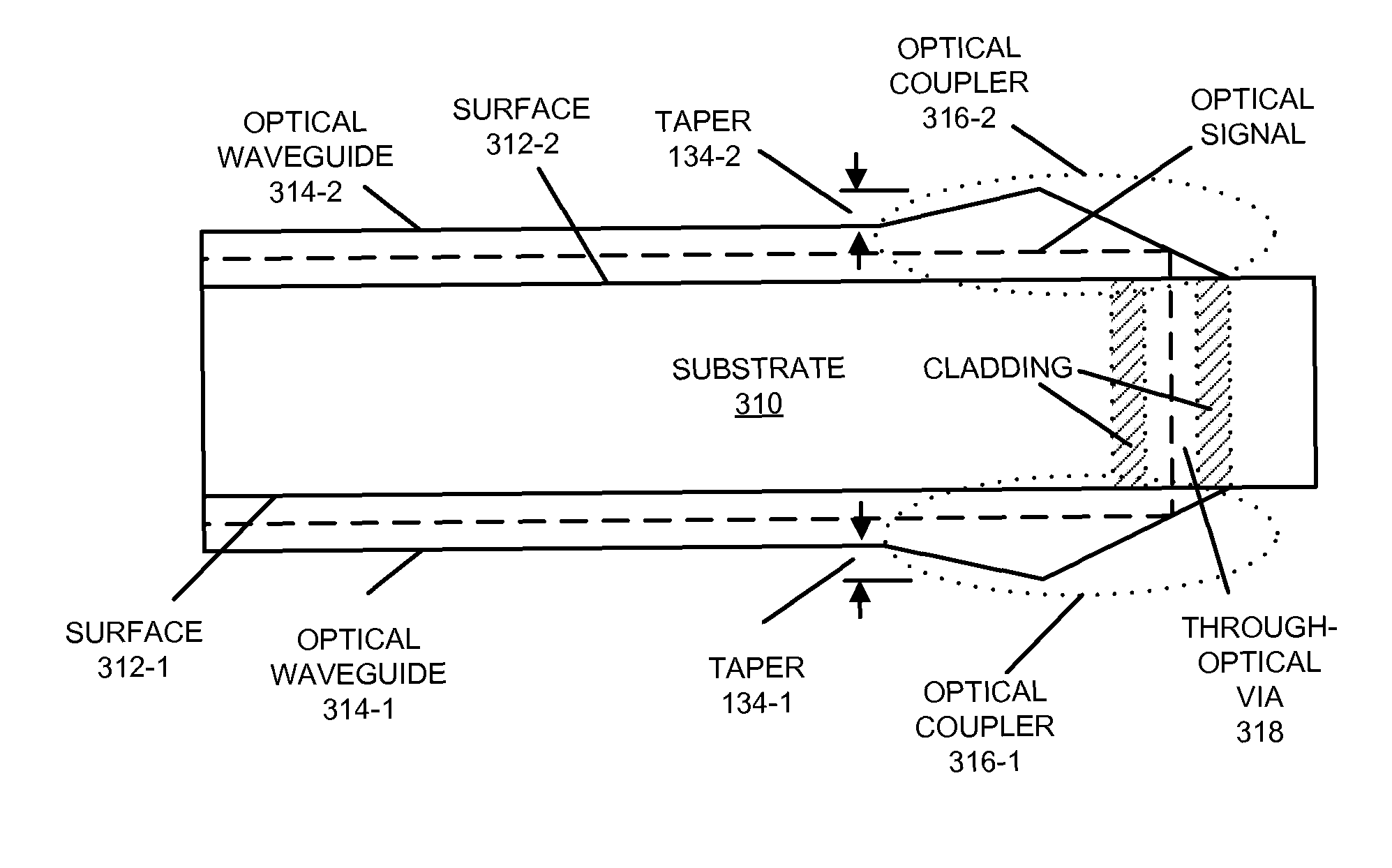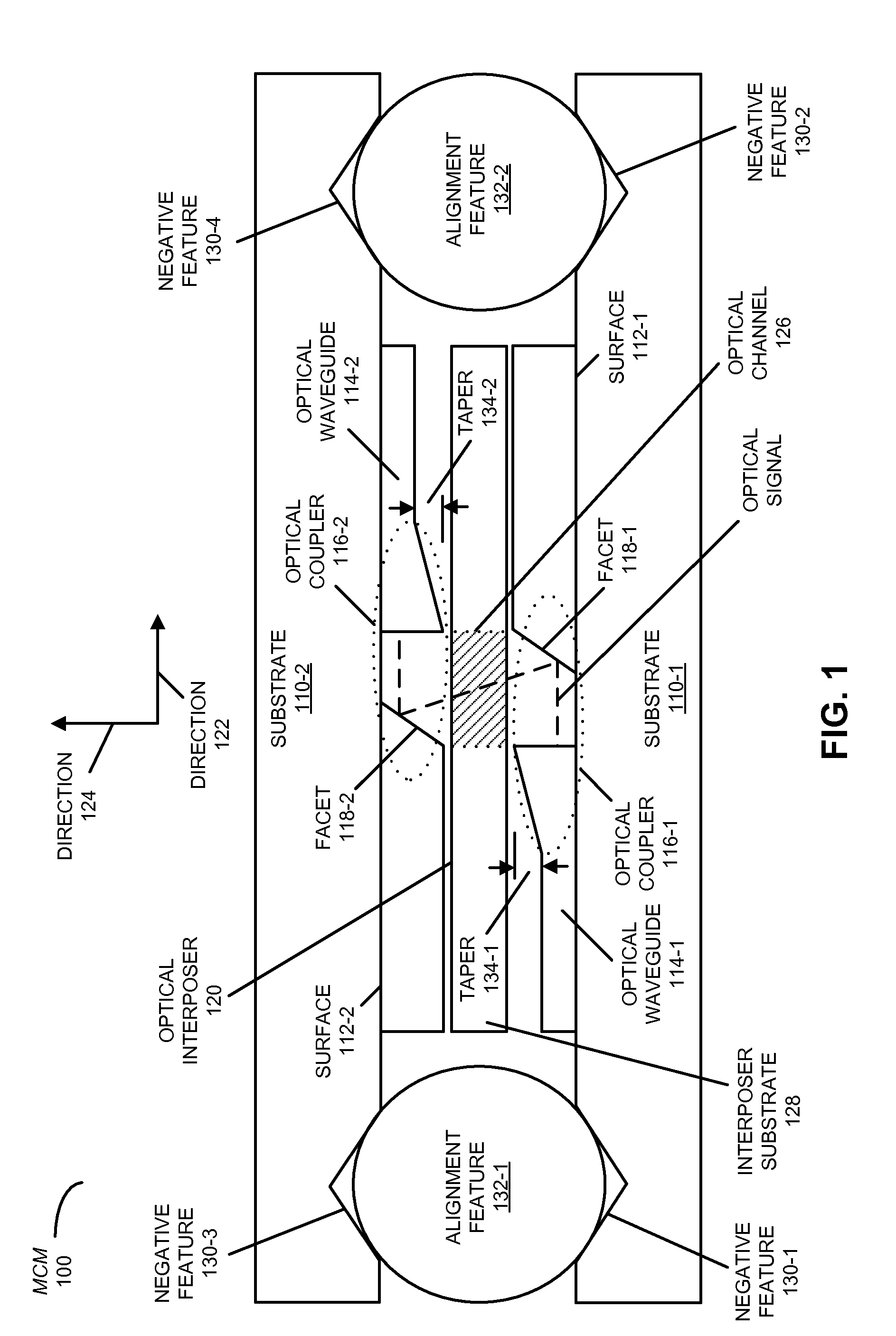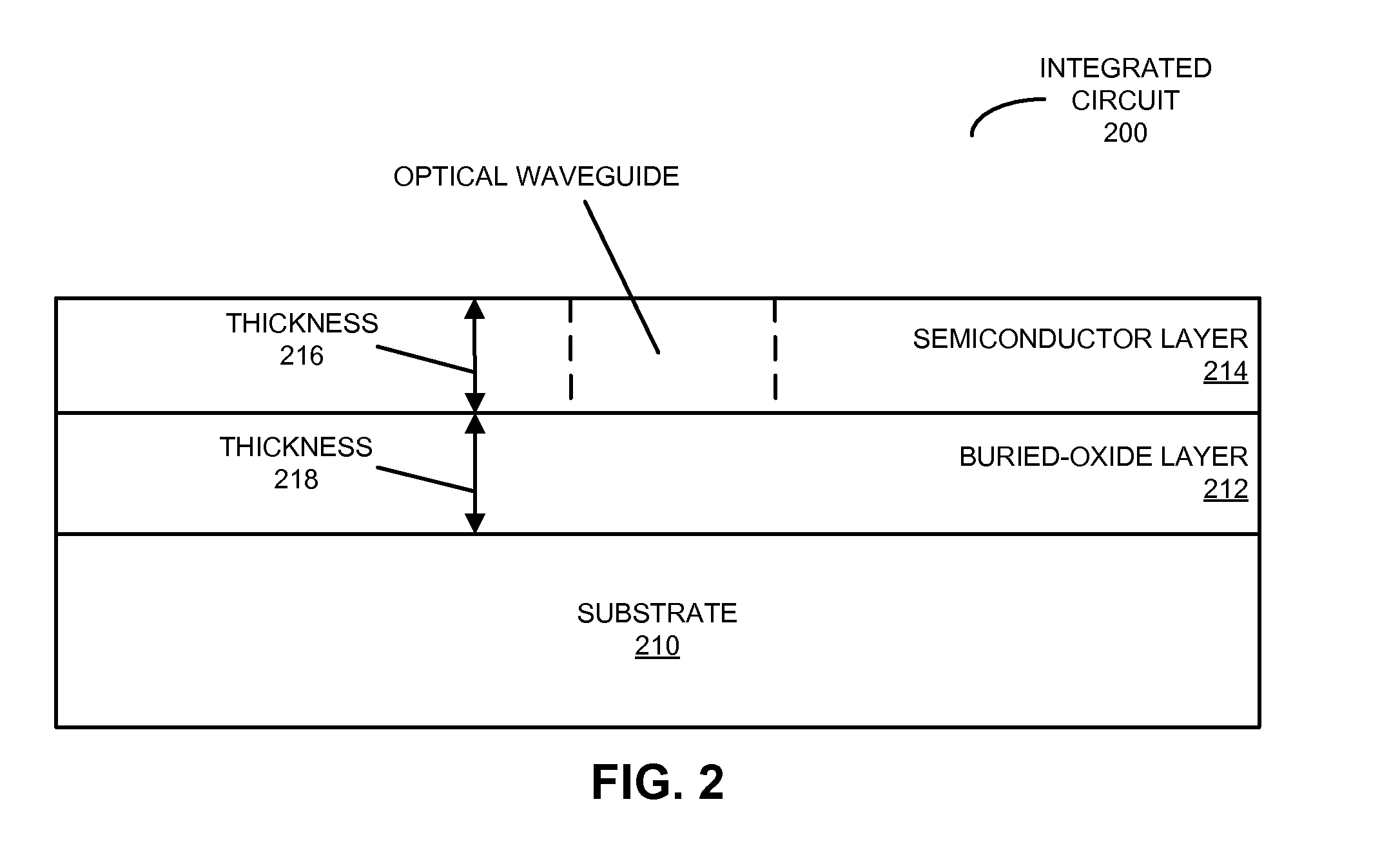Efficient inter-chip optical coupling
a technology of optical coupling and inter-chip coupling, which is applied in the direction of optical waveguide light guide, optical light guide, instrument, etc., can solve the problems of reducing the performance requirements (and thus the cost) of other components in the system, affecting the performance of other components, and affecting the performance of low-loss coupling and broadband transmission. achieve the effect of reducing the spatial expansion of the optical signal
- Summary
- Abstract
- Description
- Claims
- Application Information
AI Technical Summary
Benefits of technology
Problems solved by technology
Method used
Image
Examples
Embodiment Construction
[0026]Embodiments of a multi-chip module (MCM), a system that includes the MCM, and a method for directly optically coupling an optical signal between substrates or chips in the MCM are described. In this MCM, the optical signal is conveyed by an optical waveguide disposed on a surface of a first substrate to a first optical coupler. This first optical coupler redirects the optical signal out of the plane of the optical waveguide. Then, an optical interposer guides the optical signal between the first optical coupler and a second optical coupler on a surface of a second substrate, thereby reducing spatial expansion of the optical signal between the optical couplers. Moreover, the second optical coupler redirects the optical signal into a plane of an optical waveguide disposed on a surface of the second substrate, which then conveys the optical signal.
[0027]By facilitating direct optical coupling of the optical signal, the MCM may facilitate high-fidelity signaling between the substr...
PUM
 Login to View More
Login to View More Abstract
Description
Claims
Application Information
 Login to View More
Login to View More - R&D
- Intellectual Property
- Life Sciences
- Materials
- Tech Scout
- Unparalleled Data Quality
- Higher Quality Content
- 60% Fewer Hallucinations
Browse by: Latest US Patents, China's latest patents, Technical Efficacy Thesaurus, Application Domain, Technology Topic, Popular Technical Reports.
© 2025 PatSnap. All rights reserved.Legal|Privacy policy|Modern Slavery Act Transparency Statement|Sitemap|About US| Contact US: help@patsnap.com



